Rock deformation
Type of resources
Topics
Keywords
Contact for the resource
Provided by
Years
Formats
Update frequencies
-
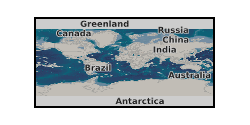
Data files have .dat extension and can be opened with Notepad or any basic text editor software. Each file contains details of sample name, dimensions (length and diameter). All deformed samples were pre-prepared cylinders of synthetic neighbourite. Each file contains 11 data column as follows: Time (hours); Time (secs); CP (V); Vol (V); Force(V); Temp (V); Disp(V); Euro disp (mm); Furn T (mV); PoreP (mV); Furnace Power where V= Volts, mV= millivolts. The Calibration sheet (specific to the apparatus used) uploaded together with the data files is required to convert V and mV raw data into values of stress, strain, strain rate, confining pressure and temperature.
-
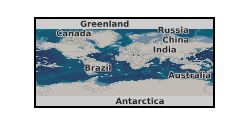
Text data capturing pore fluid pressures (upstream and downstream), axial stress, axial and radial displacement were conditioned and logged by a high-speed data acquisition unit (NI-DAQ 6341) recording data at 10kHz. Two additional cantilever-type radial strain probes are attached directly to the sample at 90 degrees to each other, with an average output calculated via sqrt[(rA2 + rB2)], where rA and rB are the two radial outputs, to monitor an average radial strain and crack opening displacement.
-
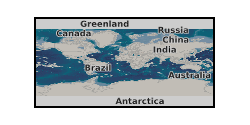
These data contain time series of stress, strain, confining pressure, pore pressure, pore volume, permeability and elastic wave velocities of samples of Purbeck Limestone deformed under hydrostatic and triaxial conditions at room temperature. All samples were saturated with decane as pore fluid.This dataset is used and fully described/interpreted in the paper: Brantut, N., M. Baker, L. N. Hansen and P. Baud, Microstructural control of physical properties during deformation of porous limestone, submitted to J. Geophys. Res.
-
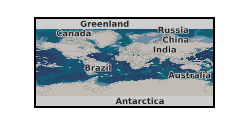
The dataset contains information on the crystallographic orientation and on the grain size of minerals in the brittle-viscous shear zones. The methodology used to generate it is polarized light microscopy, scanning electron microscopy (SEM) and electron backscatter diffraction (EBSD)
-
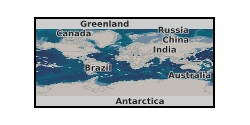
This collection comprises two time-series of 3D in-situ synchrotron x-ray microtomography (μCT) volumes showing two Ailsa Craig micro-granite samples (ACfresh02 and ACHT01) undergoing triaxial deformation. These data were collected in-situ at the PSICHE beamline at the SOLEIL synchrotron, Gif-sur-Yvette, France in December 2016 (standard proposal 20160434) and are fully explained in Cartwright-Taylor A., Main, I.G., Butler, I.B., Fusseis, F., Flynn M. and King, A. (in press), Catastrophic failure: how and when? Insights from 4D in-situ x-ray micro-tomography, J. Geophys. Res. Solid Earth. Together, these two time-series show the influence of heterogeneity on the micro-crack network evolution. Ailsa Craig micro-granite is known for being virtually crack-free. One sample (ACfresh02) remained as-received from the quarry until it was deformed, while the second (ACHT01) was slowly heated to 600 degC and then slowly cooled prior to deformation in order to introduce material disorder in the form of a network of nano-scale thermal cracks. Thus these two samples represent two extreme end-members: (i) ACfresh02 with the lowest possible (to our knowledge) natural pre-existing crack density, and so is a relatively homogeneous sample and (ii) ACHT01 with a thermally-induced nano-crack network imprinted over the nominally crack-free microstructure, and therefore has increased heterogeneity relative to ACfresh02. Each 3D μCT volume shows the sub-region of each sample in which the majority of damage was located and has three parts. Part one is reconstructed 16-bit greyscale data. Part two is 8-bit binary data showing individual voids (pores and micro-cracks) in the dataset after segmentation. Part three is 32-bit data showing the local thickness of each void, as in Cartwright-Taylor et al. (in press) Figures 4 and 5. Each part is a zip file containing a sequence of 2D image files (.tif), sequentially numbered according to the depth (in pixels, parallel to the loading axis) at which it lies within the sample volume. File dimensions are in pixels (2D), with an edge length of 2.7 microns. Each zip file is labelled with the sample name, the relevant letter for each 3D volume as given in Cartwright-Taylor et al. (in press) Tables 3 and 4, part 1, 2 or 3 (depending whether the data are greyscale, binary or local thickness respectively), the differential stress (MPa) on the sample, and the associated ram pressure (bar) to link with individual file names. The following convention is used: sample_letter_part_differentialstress_rampressure_datatype. Also included are (i) two spreadsheets (.xlsx), one for each sample, containing processing parameters and the mechanical stress and strain at which each volume was scanned, and (ii) zip files containing .csv files containing measurement data for the labelled voids in each volume. N.B. void label numbers are not consistent between volumes so they can only be used to obtain global statistics, not to track individual voids.
-
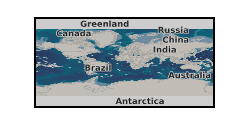
This dataset shows both the micro-scale mechanisms and acoustic response involved in shear failure of a deforming porous rock. To our knowledge, this is the first such dataset to combine simultaneous acoustic measurements and x-ray tomography imaging. It comprises a time-series of 3D in-situ synchrotron x-ray microtomography (µCT) volumes showing a Clashach sandstone sample (CL10) undergoing triaxial deformation to failure under a constant acoustic emissions (AE) event rate. Use of a constant AE event rate slowed down the failure process after peak stress, enabling shear failure to be captured in unprecedented spatio-temporal detail by the µCT volumes. These volumes are accompanied by the local incremental 3D strain fields and simultaneously acquired waveforms from acoustic emissions and ultrasonic velocity surveys, as well as mechanical bulk stress and strain. These data are fully explained in Cartwright-Taylor et al. Seismic events miss important grain-scale mechanisms governed by kinematics during shear failure of porous rock, in review at Nature Communications. We also include an equivalent time-series of the same data types showing a second Clashach sandstone sample (CL04) undergoing triaxial deformation to failure, this time under a constant strain rate where failure happened abruptly, shortly after peak stress. Both collections were acquired in-situ on the beamline I12-JEEP at the Diamond Light Source, Didcot, UK, in September 2019. Each 3D µCT volume of the sample is contained in a .zip file labelled with the sequential scan number. Each volume comprises reconstructed 16-bit grey-scale data in a sequence of 2D image files (.tif), each numbered according to the depth at which it lies within the sample volume. The file dimensions are pixels, with an edge length of 7.91 µm. Two further .zip files contain the incremental 3D volumetric and deviatoric strain fields, obtained from digital volume correlation between neighbouring µCT volumes. Each strain field consists of a 32-bit 3D image file (.tif) in pixels with an edge length of 316.4 µm, labelled with its scan increment. Also included are (i) .csv files, containing the mechanical stress and strain time-series, the time and mechanical data at which each µCT volume was scanned, and the acoustic emissions event rate data, and (ii) .zip files containing times and waveforms for the acoustic emissions and ultrasonic velocity surveys as .ascii files. The .zip and .xlsx files are labelled with the sample name, the data type (grey-scale, strain-volumetric, strain-deviatoric, seismic, mechanical, mechCT, eventrateAE) and the sequential scan number (grey-scale only) according to the following convention: sample_datatype_scan#. We acknowledge Diamond Light Source for time on beamline I12-JEEP under proposal MG22517. This work is supported by the UK's Natural Environment Research Council (NERC) through the CATFAIL project NE/R001693/1 Catastrophic failure: what controls precursory localisation in rocks?
-
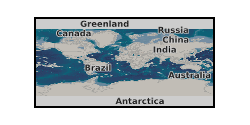
Data recorded during triaxial rock deformation experiments of Westerly granite in the presence of pressurised pore fluids (water). Data consists of mechanical data (load, displacement, confining pressure) and pore pressure data (up- and downstream pore pressure, upstream intensifier volume, four pore pressure transducers mounted on sample). Contains all data necessary to evaluate the results presented in the paper entitled: 'Dilatancy stabilises shear failure in rock' by Aben and Brantut, submitted to Earth and Planetary Science letters, and available at arXiv (arXiv:2101.10036).
-
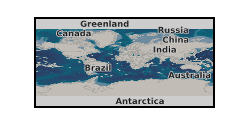
Friction coefficient and frictional stability (rate & state parameter) data for triaxially compressed direct shear experiments on kaolinite-rich china clay and Mg-montmorillonite fault gouges (<2micron grain size). A total of 19 raw experimental datasets are presented as detailed in the index files: 13 on kaolinite-rich china clay, and 6 on cation-exchanged Mg-Montmorillonite. The raw data files, logged at either 1 or 2Hz, comprise confining pressures, upstream and downstream fluid pressures, force experienced by the direct shear assembly during triaxial compression, and absolute volumes of the confining pressure and fluid pressure reservoirs. Data is provided as measured by gauges in the pressure vessel in Volts, and also as calculated in MPa, kN and mm3. Also presented are the outputs of MATLAB models run to simulate the rate and state parameters k, a, b, dc and f0 for each experiment, with error data presented as 2sigma and standard error values. Parameters were determined using a non-linear least-squares fitting routine with the machine stiffness treated as a fitting parameter (c.f. Noda and Shimamoto, 2009). Data were fit by a single set of state variables (a, b, dc) with a linear detrend. Also presented are the outputs of Specific Thermogravimetric Analyses on kaolinite-rich china clay and Mg-montmorillonite.
-
Fluid flow in the Earth: the influence of dehydration reactions and stress (NERC grant NE/J008303/1)
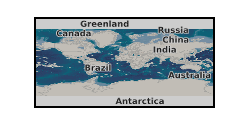
Text files of physical parameters controlled or measured in rock heating and deformation experiments; jpg and tif files of optical and electron microscope images of experimental products; xome xlsx spreadsheets related to data interpretation.
-
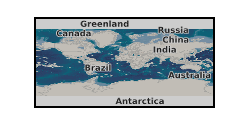
A brief description of ten core plug samples collected from borehole GGC01 (Glasgow, United Kingdom) is provided, as well as for twelve 15-50 g cuttings samples from 1m intervals within borehole GGA08. Samples were also collected from borehole GGA02 but not used for further analyses. Data comprise results from geomechanical tests, permeability and porosity measurements, and X-Ray Diffraction analyses performed on drillcore samples of sandstones, siltstones, mudstones and coals from eleven depth intervals within the GGC01 borehole. Geomechanical data include triaxial compressional strength, tensile strength, and frictional strength. Frictional strength data was also collected for cuttings samples of sandstones, siltstones, mudstones and coals from the GGA08 borehole. In total twenty-three tensile strength tests were performed on ten sampled intervals, and seven porosity measurements pre-and post-failure were taken. Nine triaxial compressive strength tests and twenty-one frictional strength tests were performed, with permeability measured both before and after failure or shear respectively. From compressive strength tests we also determined the Young’s modulus and Poisson’s ratio. Samples and data are derived from the UK Geoenergy Observatories Programme funded by the UKRI Natural Environment Research Council and delivered by the British Geological Survey.
 BGS Data Catalogue
BGS Data Catalogue